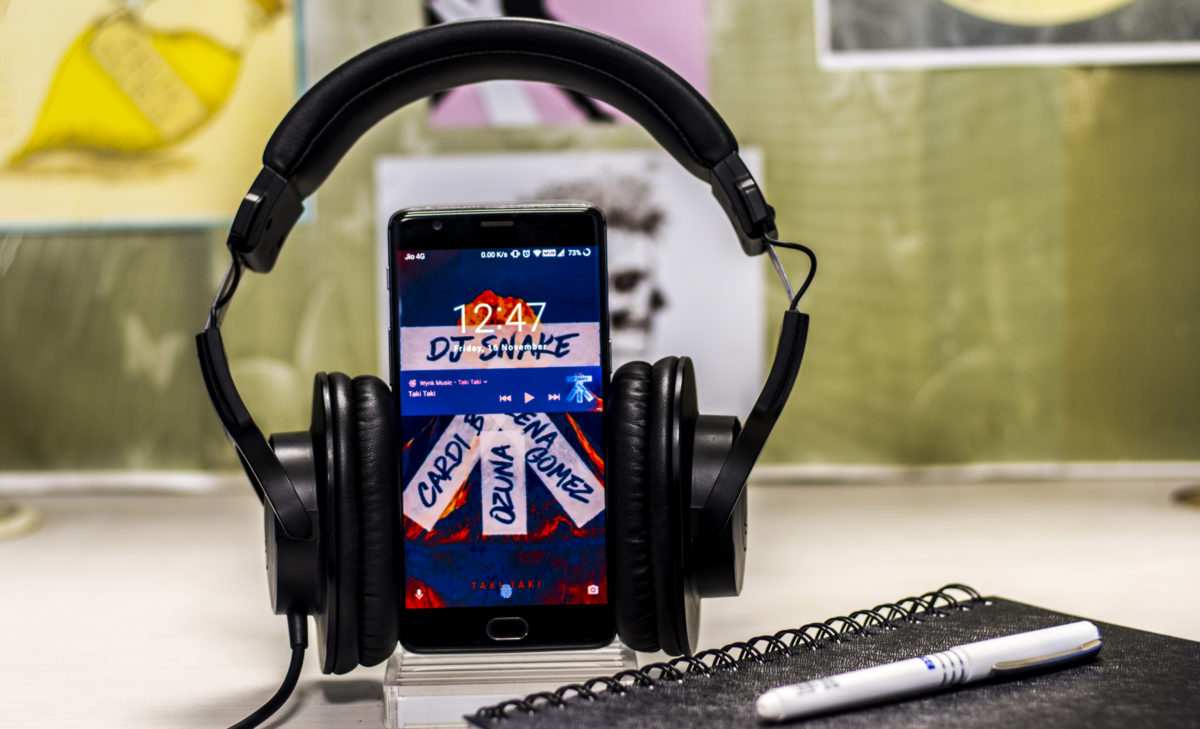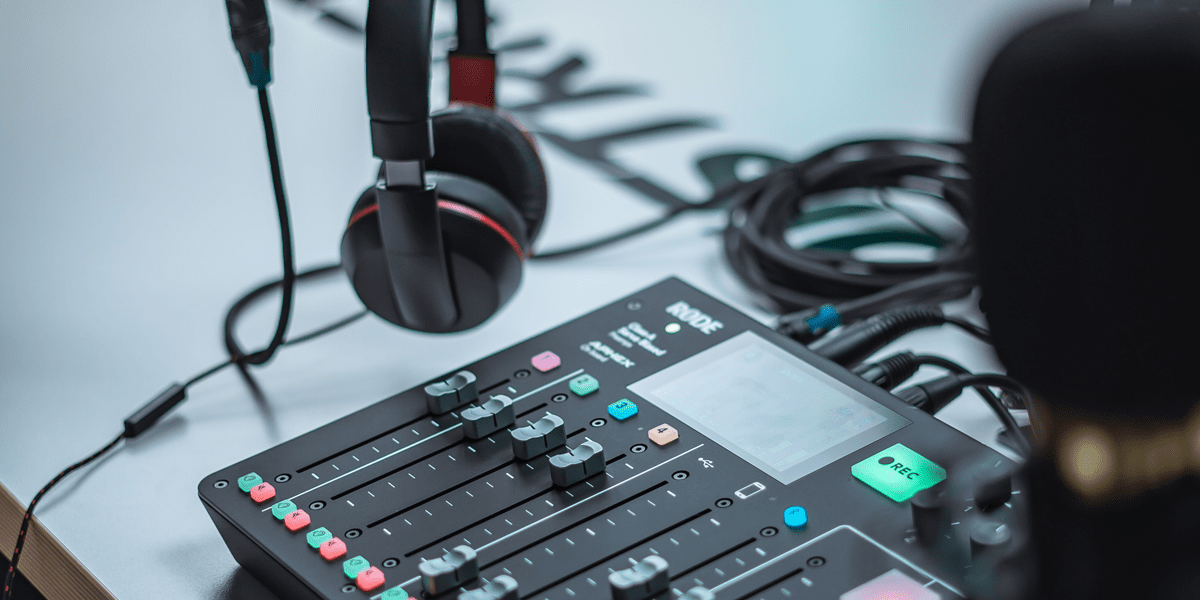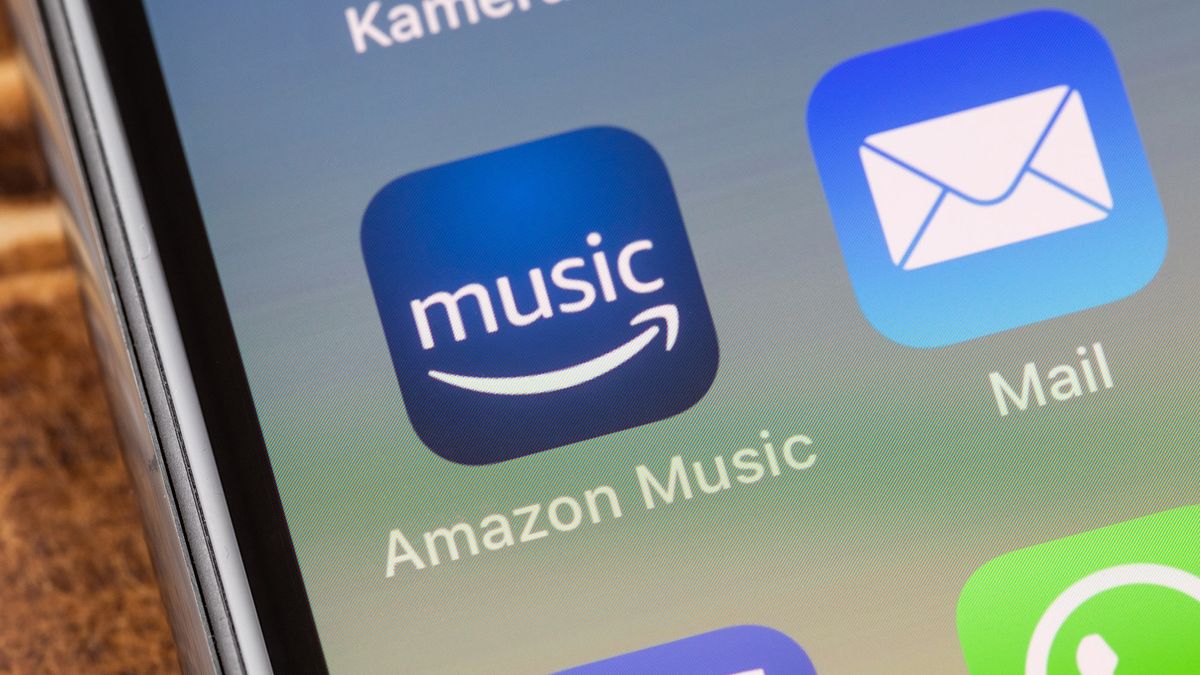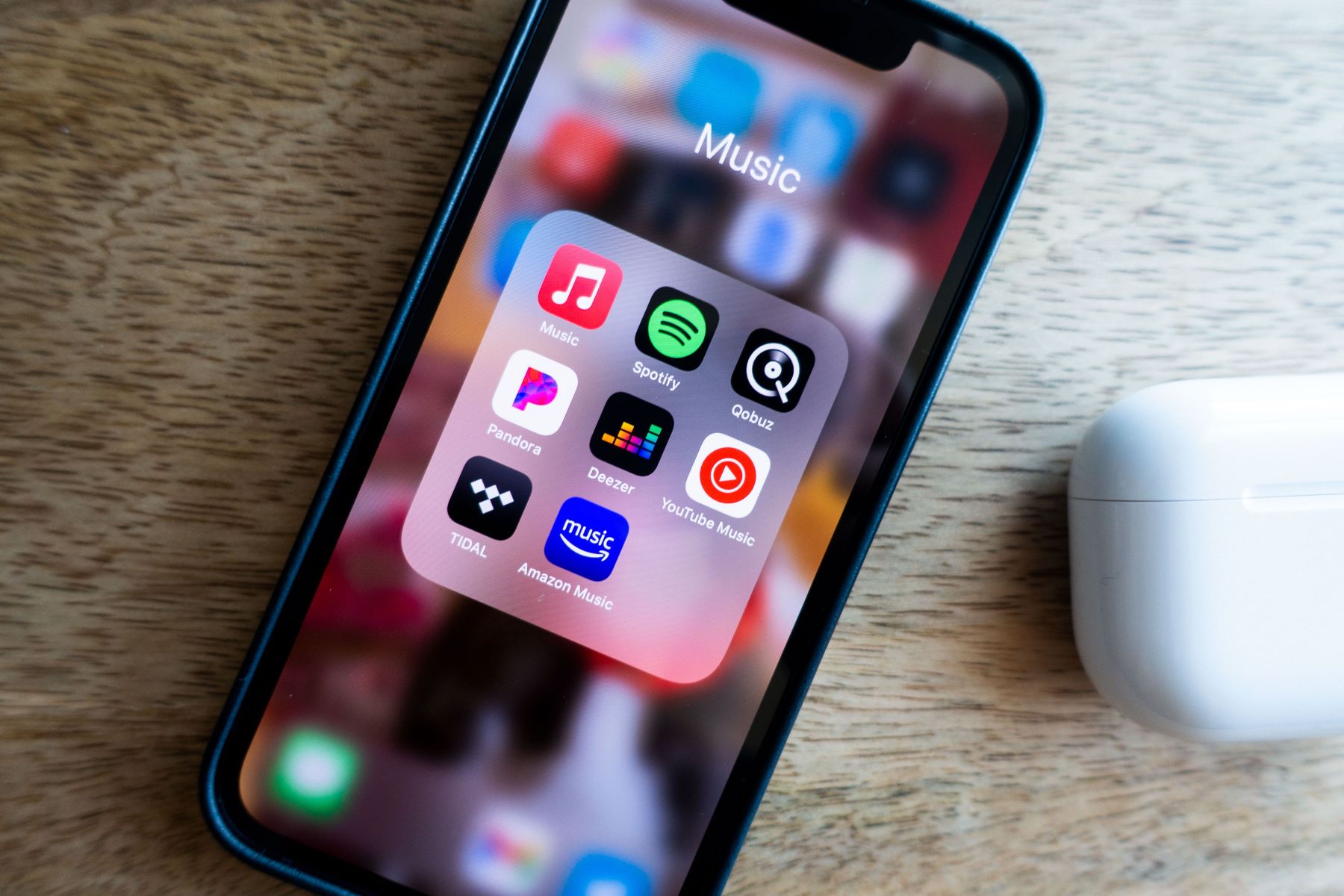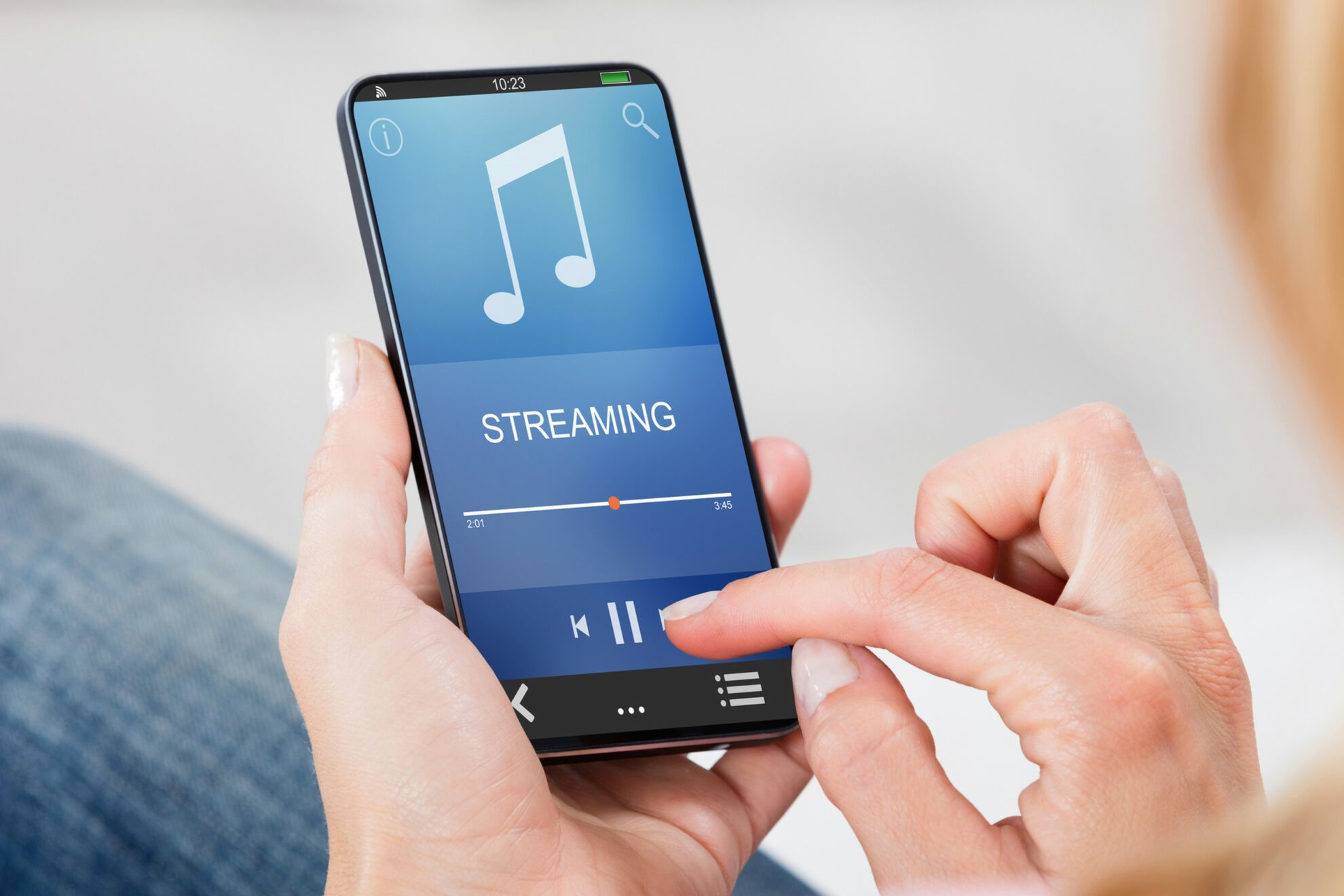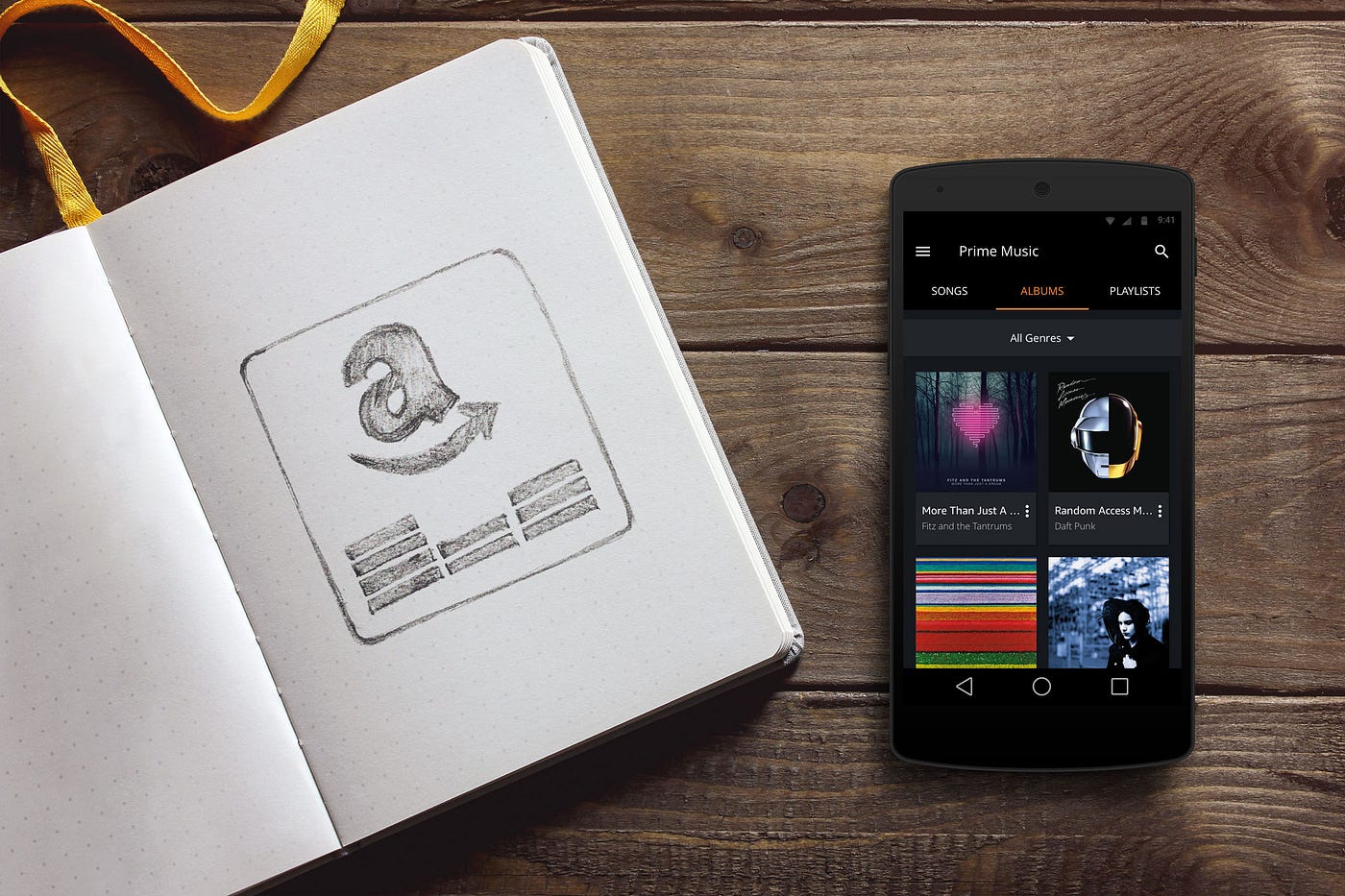Home>Devices & Equipment>Streaming>How To Record Streaming Music?


Streaming
How To Record Streaming Music?
Published: March 8, 2024
Learn how to record streaming music effortlessly with our comprehensive guide. Capture your favorite tunes and create your music library today!
(Many of the links in this article redirect to a specific reviewed product. Your purchase of these products through affiliate links helps to generate commission for AudioLover.com, at no extra cost. Learn more)
Table of Contents
Introduction
Streaming music has revolutionized the way we enjoy our favorite tunes. With the advent of platforms like Spotify, Apple Music, and Amazon Music, music lovers can access an extensive library of songs at their fingertips. However, there are times when we come across a rare live performance, an exclusive track, or a captivating mix that isn't readily available for download. In such instances, the ability to record streaming music becomes invaluable.
In this article, we will delve into the world of recording streaming music, exploring the tools, techniques, and legal considerations associated with this practice. Whether you're a music enthusiast looking to preserve a memorable live session or a DJ seeking to capture a unique mix, understanding the nuances of recording streaming music can open up a world of possibilities.
As we navigate through the intricacies of this process, we'll also highlight the importance of respecting copyright laws and ethical considerations when recording streaming music. By gaining a comprehensive understanding of the legal aspects, you can ensure that your passion for music remains in harmony with the rights of artists and content creators.
Furthermore, we will provide a step-by-step guide to help you seamlessly capture your favorite streaming tracks, empowering you to curate a personalized music collection that transcends the limitations of online streaming. Additionally, we'll share valuable tips to enhance the quality of your recordings, ensuring that the essence of the music is preserved in its truest form.
Join us on this journey as we unravel the art of recording streaming music, empowering you to preserve and relive the magic of musical moments that resonate deeply with your soul. Let's embark on this exploration of creativity, technology, and legal responsibility, as we unlock the potential to capture the ephemeral beauty of streaming music.
Understanding Streaming Music
Streaming music refers to the method of delivering audio content in real-time over the internet. Unlike traditional downloads, where the entire file must be obtained before playback, streaming allows users to access and enjoy music without the need for permanent storage on their devices. This on-demand access to a vast array of songs, albums, and playlists has redefined the way we consume music, offering unparalleled convenience and variety.
The popularity of streaming music services has soared in recent years, with platforms such as Spotify, Apple Music, and Amazon Music leading the charge. These services provide subscribers with access to an extensive catalog of songs from diverse genres, artists, and eras, catering to a wide spectrum of musical preferences. Additionally, streaming platforms often offer personalized recommendations, curated playlists, and algorithm-driven suggestions, enhancing the overall music discovery experience for users.
One of the key features of streaming music is its seamless integration across multiple devices. Whether it's a smartphone, tablet, computer, or smart speaker, users can access their favorite tunes anytime, anywhere, with just a few taps or voice commands. This versatility has transformed the way people engage with music, allowing for a fluid transition between different listening environments and devices.
Furthermore, streaming music has facilitated the resurgence of singles as a dominant format in the music industry. With the ability to instantly access individual tracks, listeners have embraced the freedom to explore and enjoy standalone songs, contributing to a shift in consumption patterns and artist promotion strategies.
From a technological standpoint, streaming music leverages sophisticated compression algorithms and network protocols to deliver high-quality audio over varying internet connection speeds. This optimization ensures that users can enjoy smooth playback and consistent audio fidelity, irrespective of their internet bandwidth.
Understanding the nuances of streaming music is essential for anyone seeking to record and preserve their favorite tracks. By grasping the intricacies of how music is delivered and experienced through streaming platforms, individuals can gain a deeper appreciation for the art of capturing and curating musical moments that resonate with their emotions and memories.
Legal Considerations
When it comes to recording streaming music, it is crucial to navigate the legal landscape with diligence and respect for intellectual property rights. The act of recording music from streaming platforms raises important considerations related to copyright law, fair use, and ethical practices.
Copyright law serves as the cornerstone of legal protection for musical works and recordings. It grants exclusive rights to the creators and owners of music, safeguarding their ability to control the reproduction, distribution, and public performance of their works. As such, recording streaming music without proper authorization can infringe upon these rights, potentially leading to legal repercussions.
Fair use, a doctrine within copyright law, allows for limited use of copyrighted material without the need for permission from or payment to the rights holders. However, the application of fair use in the context of recording streaming music is subject to specific conditions, including the purpose of the recording, the nature of the copyrighted work, the amount of material used, and the potential impact on the market for the original work.
It is important to note that the terms of service of streaming platforms often explicitly prohibit the unauthorized recording of their content. By agreeing to these terms, users commit to respecting the platform's policies and guidelines, which may restrict or prohibit the recording of streamed music for personal use.
Furthermore, ethical considerations play a significant role in the decision to record streaming music. Respecting the creative efforts of artists, songwriters, and music industry professionals is paramount. Recording music from streaming platforms should be approached with a conscientious mindset, acknowledging the value of artistic expression and the contributions of those involved in the creation and dissemination of music.
In essence, the legal considerations surrounding the recording of streaming music underscore the importance of upholding the rights of content creators and respecting the terms of service of streaming platforms. By adhering to copyright law, understanding the principles of fair use, and embracing ethical practices, individuals can navigate the complexities of recording streaming music while honoring the legal and moral foundations that underpin the music industry.
Tools for Recording Streaming Music
When it comes to capturing the ephemeral beauty of streaming music, having the right tools at your disposal can make all the difference. From software applications to specialized hardware, a diverse array of options exists for recording streaming music with precision and flexibility.
Software Solutions
-
Audio Recording Software: Programs such as Audacity, OBS Studio, and Adobe Audition offer robust recording capabilities, allowing users to capture audio streams from their computer's sound output. These software solutions often feature customizable settings for audio quality, format, and source selection, empowering users to tailor their recording setup to their specific preferences.
-
Streaming Audio Recorders: Dedicated streaming audio recorders, including Apowersoft Streaming Audio Recorder and Wondershare Streaming Audio Recorder, are designed to seamlessly capture audio from streaming platforms. These tools often integrate automatic track splitting, metadata tagging, and scheduled recording functionalities, streamlining the process of archiving streaming music.
-
Virtual Audio Cable: Virtual audio cable software, such as VB-Audio Virtual Cable and Voicemeeter, enables users to create virtual audio devices within their computer's audio ecosystem. By routing audio from a streaming platform to a virtual input, users can then record the audio output from the virtual device, providing a flexible and customizable approach to capturing streaming music.
Hardware Solutions
-
External Audio Interfaces: Utilizing an external audio interface, such as the Focusrite Scarlett series or the PreSonus AudioBox, can elevate the recording quality by providing professional-grade audio inputs and outputs. These interfaces offer enhanced signal clarity, preamp functionality, and versatile connectivity options, making them ideal for capturing streaming music with pristine audio fidelity.
-
Digital Audio Recorders: Portable digital audio recorders, such as the Zoom H4n Pro and Tascam DR-40X, offer a convenient solution for capturing streaming music on the go. With built-in microphones, adjustable input levels, and onboard recording controls, these devices empower users to capture live performances, DJ sets, and ambient music with ease.
-
Audio Cables and Adapters: In scenarios where direct audio capture is required, utilizing audio cables and adapters, such as RCA to 3.5mm cables or digital audio converters, can facilitate the connection between audio sources and recording devices. This approach is particularly useful for capturing audio from analog outputs or external playback devices.
By leveraging these tools for recording streaming music, individuals can embark on a journey of musical preservation and creativity, capturing cherished tracks and performances with precision and care. Whether opting for software-based solutions or embracing the capabilities of specialized hardware, the right tools can empower music enthusiasts to curate a personalized collection of streaming music that transcends the digital realm.
Step-by-Step Guide to Recording Streaming Music
Recording streaming music requires a systematic approach to ensure the seamless capture of audio content while maintaining optimal quality and compliance with legal considerations. By following a step-by-step guide, individuals can navigate the process with confidence and precision, empowering them to curate a personalized collection of their favorite streaming tracks.
Step 1: Selecting the Recording Tool
Begin by choosing the appropriate recording tool based on your preferences and technical capabilities. Whether opting for dedicated audio recording software, virtual audio routing solutions, or specialized hardware, the selection of the recording tool forms the foundation of the recording process.
Step 2: Configuring Audio Settings
Once the recording tool is in place, configure the audio settings to align with your desired recording parameters. Adjust the input sources, audio formats, and quality settings to optimize the recording setup for capturing streaming music with clarity and fidelity.
Step 3: Accessing the Streaming Platform
Navigate to the streaming platform of your choice and locate the music content you intend to record. Ensure that the playback settings and audio output options are configured to facilitate seamless audio transmission to the recording tool.
Step 4: Initiating the Recording
With the audio settings configured and the streaming platform ready, initiate the recording process on the selected tool. Start playback of the desired music content on the streaming platform, allowing the recording tool to capture the audio stream in real-time.
Step 5: Monitoring the Recording
Throughout the recording process, monitor the audio levels and quality to ensure that the captured content meets your expectations. Adjust the recording settings as needed to maintain consistent audio fidelity and address any potential issues that may arise during the recording session.
Step 6: Managing Recorded Tracks
Upon completing the recording, manage the captured tracks by organizing them based on metadata, track titles, and relevant information. This step facilitates the seamless integration of the recorded music into your personal library, enhancing accessibility and navigation.
Step 7: Respecting Copyright and Terms of Service
As a crucial ethical consideration, respect the copyright of the recorded music and adhere to the terms of service of the streaming platform. Acknowledge the rights of the content creators and refrain from unauthorized distribution or commercial use of the recorded material.
By following this step-by-step guide, individuals can embark on the journey of recording streaming music with clarity, precision, and ethical responsibility. This systematic approach empowers music enthusiasts to preserve and curate their favorite streaming tracks while upholding the legal and moral principles that underpin the music industry.
Tips for Better Quality Recording
Achieving optimal audio quality when recording streaming music is essential to preserving the nuances and richness of the music. By implementing the following tips, individuals can elevate the quality of their recordings, ensuring that the essence of the music is faithfully captured and retained.
1. Source Selection and Audio Quality
When selecting the source for streaming music, prioritize platforms that offer high-quality audio streams, such as those that support lossless or high-bitrate formats. Opting for premium or Hi-Fi subscription tiers on streaming services can provide access to enhanced audio quality, resulting in recordings with greater depth and clarity.
2. Audio Routing and Signal Chain
Pay attention to the audio routing and signal chain to maintain the integrity of the audio stream during recording. Minimize unnecessary signal conversions and processing to preserve the original audio quality, ensuring that the recorded content reflects the true sonic characteristics of the music.
3. Bitrate and File Format
Choose a bitrate and file format that align with the desired audio quality and compatibility requirements. Higher bitrates, such as 320 kbps for MP3 or lossless formats like FLAC, can capture more detail and dynamic range, enhancing the fidelity of the recorded music.
4. Avoiding Compression and Equalization
Refrain from applying additional compression or equalization during the recording process unless it is essential for mitigating technical issues. Minimizing signal manipulation preserves the authenticity of the music, allowing for a faithful representation of the original audio content.
5. Monitoring and Levels
Regularly monitor the recording levels to prevent clipping or distortion, ensuring that the audio signal remains within the optimal range. Adjust input levels and gain settings to achieve a balanced and robust recording without compromising on dynamic range or signal integrity.
6. Ambient Noise and Room Acoustics
Consider the impact of ambient noise and room acoustics on the recording environment. Minimize background noise and reverberation by selecting a quiet and acoustically favorable space for recording, enhancing the clarity and focus of the captured music.
7. Metadata and Tagging
Incorporate accurate metadata and tagging for the recorded tracks, including artist names, album titles, and track information. This metadata not only enhances the organization of the recorded music but also ensures seamless integration into personal music libraries and playback systems.
8. Backup and Archiving
Establish a robust backup and archiving system for the recorded music to safeguard against data loss or corruption. Implement redundant storage solutions and periodic backups to preserve the recorded content for long-term enjoyment and accessibility.
By implementing these tips, individuals can elevate the quality of their recorded streaming music, capturing the essence of the music with precision and fidelity. These considerations empower music enthusiasts to curate a collection of recorded tracks that faithfully represent the artistry and emotional resonance of the original music.
Conclusion
In the realm of streaming music, the ability to record and preserve cherished tracks holds profound significance for music enthusiasts and creators alike. As we conclude our exploration of recording streaming music, it is essential to reflect on the multifaceted nature of this practice and its implications for the music ecosystem.
Recording streaming music represents a convergence of technological innovation, artistic appreciation, and ethical responsibility. It empowers individuals to capture fleeting musical moments, whether it's a rare live performance, an exclusive session, or a personalized mix, and integrate them into their personal music collections. This act of preservation transcends mere archiving; it embodies a deep-seated connection to the emotional and nostalgic resonance of music, allowing listeners to revisit and relive transformative musical experiences.
However, the pursuit of recording streaming music is not without its ethical and legal considerations. Respect for copyright law, adherence to fair use principles, and compliance with streaming platform terms of service are integral to maintaining the delicate balance between artistic expression and intellectual property rights. By approaching the recording process with mindfulness and ethical awareness, individuals can honor the creative efforts of artists and content creators while indulging in the joy of musical curation.
Furthermore, the quality of recorded streaming music is a testament to the meticulousness and dedication of those who seek to capture the essence of the music faithfully. By leveraging the right tools, implementing best practices, and embracing technical considerations, individuals can elevate the quality of their recordings, ensuring that the intrinsic beauty and sonic intricacies of the music are preserved with integrity.
As we navigate the dynamic landscape of streaming music, the act of recording serves as a celebration of musical diversity, a testament to the transformative power of sound, and a tribute to the enduring legacy of artistic expression. It is a testament to the enduring legacy of artistic expression, enabling individuals to curate a personalized sonic tapestry that reflects their unique musical journey.
In essence, the art of recording streaming music encapsulates a harmonious blend of technology, creativity, and ethical consciousness. It empowers music enthusiasts to embark on a journey of musical preservation, emotional connection, and artistic appreciation, fostering a profound sense of intimacy with the music that resonates deeply within their hearts and souls.


